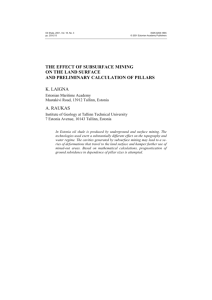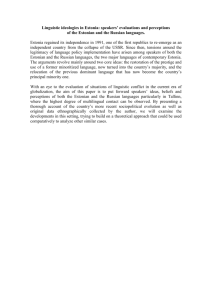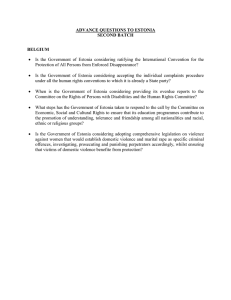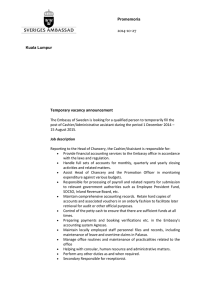2131 Massachusetts Avenue., NW Washington, D.C. 20008 USA tel
advertisement
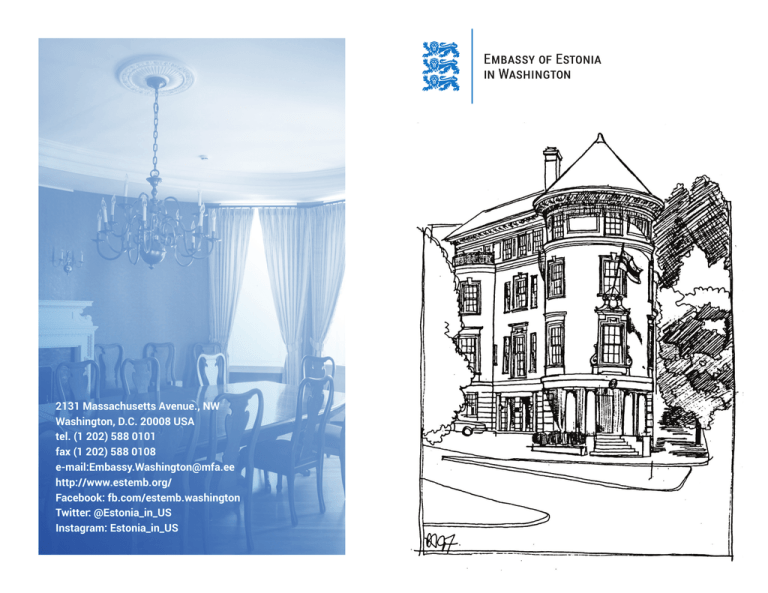
2131 Massachusetts Avenue., NW Washington, D.C. 20008 USA tel. (1 202) 588 0101 fax (1 202) 588 0108 e-mail:Embassy.Washington@mfa.ee http://www.estemb.org/ Facebook: fb.com/estemb.washington Twitter: @Estonia_in_US Instagram: Estonia_in_US Representation of Estonia in the United States After diplomatic relations were established between the Republic of Estonia and the United States, Estonia opened its Consulate in New York in May of 1921. At the end of 1923, Estonia established an Embassy in Washington, but due to difficult financial circumstances, closed it on December 31, 1925. On April 26, 1940 a decision was made to reopen the Embassy, but the illegal annexation of Estonia by the Soviet Union stopped this project. On July 23, 1940 the acting Secretary of State Sumner Welles issued the Welles Declaration, which condemned the occupation of the three Baltic states of Estonia, Latvia and Lithuania by the Soviet Union. The United States never recognized their annexation as Soviet Republics. As a result, the Estonian Consulate General in New York continued its diplomatic activities until Estonia restored its independence in August 1991. Soon after diplomatic relations were re-established, the Estonian government decided to open the Embassy in Washington. History of the Building The building housing the Estonian Embassy today, was designed in the Beaux Arts style by the architecture firm Marsh and Peter, widely renowned at the time and named after the first senior partners William J. Marsh and Walter G. Peter. Completed in 1905, the neoclassical mansion is a beautiful example of the Grand style typical of American Renaissance architecture. The exterior of the house is grandiose with a columned main entrance and oversized windows. The interior is equally spectacular. There are five floors with an additional basement, which altogether give approximately 10 000 sq feet of floor space. The mansion features a centre turret, a large staircase, side bays, multiple interior columns, intricate moldings, inlaid hardwood floors, marble fireplaces, high ceilings, empire detailing and generous room sizes. Initially, the building was meant to serve as a residence for Dr. George Barrie. As such, it hosted many famous people, most notably Senator James H. Brady. In 1929, the mansion became the first premises for the Landon School for Boys, with 22 students. The prestigious school was highly acknowledged for its moral integrity and high educational standards. Thus, only five years later, it was compelled to move to another location, as the building was too small to accommodate the growing number of students. Later on, the mansion served as the Bulgarian Legation and in the 1930s as the Embassy of Peru. After that, the building exchanged hands between different private owners and was used for various accommodation purposes, for instance, in the 1960s up to 55 people lived in the house. Starting in 1985, it stood empty for most of the time. Finally, in 1994 it was purchased by the Government of Estonia and the conversion of the vacant building to a functional embassy was made possible by architect Madis Valge. The official opening of the Embassy took place in October, 1995.

